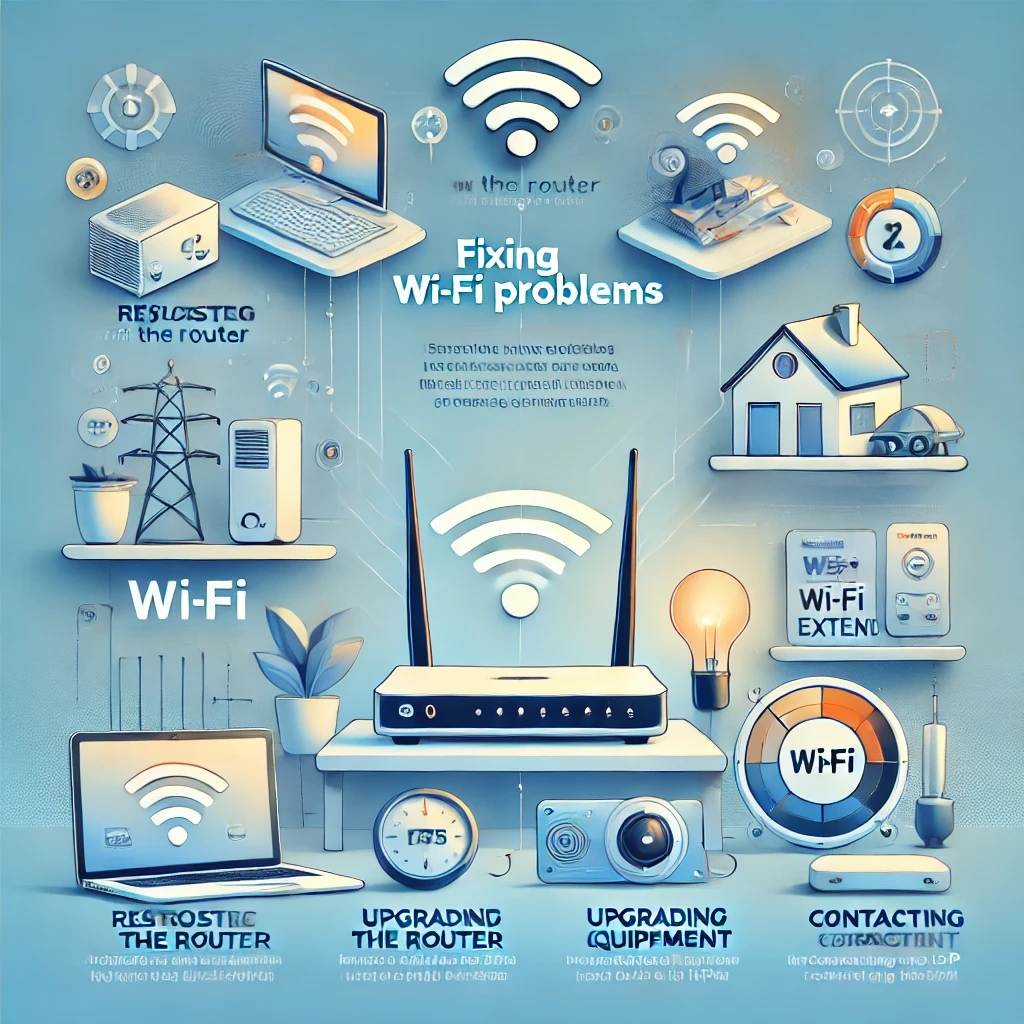
Wi-Fi issues are a common frustration for many people. Whether you’re working from home, streaming your favorite show, or gaming online, a slow or unstable connection can ruin your experience. In this blog post, we’ll explore some practical steps to troubleshoot and resolve Wi-Fi problems effectively.
Common Wi-Fi Issues and Their Causes
Before diving into solutions, it’s important to understand some common Wi-Fi issues:
Slow Internet Speeds: This can happen due to network congestion, outdated hardware, or poor signal strength.
Unstable Connection: Often caused by interference, router issues, or outdated firmware.
Wi-Fi Not Connecting: A result of incorrect settings, network name conflicts, or device-related issues.
Weak Signal: Walls, floors, and other obstructions can weaken your Wi-Fi signal.
Step-by-Step Solutions to Fix Wi-Fi Problems
- Restart Your Router
One of the simplest fixes for Wi-Fi issues is restarting your router. Power off your router, wait for 30 seconds, and turn it back on. This helps clear temporary glitches and refreshes your connection.
- Check Your Internet Plan
Sometimes, slow speeds are due to your internet plan not meeting your needs. Run a speed test using tools like Speedtest.net to compare actual speeds with your plan. Upgrade your plan if necessary.
- Move Closer to the Router
If you’re experiencing weak signals, try moving closer to your router. Physical barriers like walls or electronic interference from devices such as microwaves can weaken signals.
- Update Router Firmware
Outdated firmware can cause performance issues. Log into your router’s admin panel (usually accessible via a browser) and check for firmware updates. Follow the manufacturer’s instructions to update.
- Reduce Network Congestion
Too many devices connected to your Wi-Fi can slow it down. Disconnect devices that aren’t in use or switch to a dual-band router to distribute traffic between 2.4 GHz and 5 GHz bands.
- Change the Wi-Fi Channel
Wi-Fi channels can become congested, especially in apartment buildings where multiple networks overlap. Use a Wi-Fi analyzer app to find the least crowded channel and switch to it via your router’s settings.
- Reset Network Settings
If your device won’t connect to Wi-Fi, resetting the network settings might help. On most devices, you can find this option under network or connection settings.
- Upgrade Your Equipment
Older routers may not support modern Wi-Fi standards like Wi-Fi 6, which offers faster speeds and better performance. Consider upgrading to a newer router if yours is outdated.
- Use Wi-Fi Extenders or Mesh Systems
If your home is large or has many obstructions, a Wi-Fi extender or mesh system can help eliminate dead zones by boosting signal strength in hard-to-reach areas.
- Contact Your Internet Service Provider (ISP)
If none of the above solutions work, there could be an issue with your ISP. Contact their support team to report the issue and get assistance.
Bonus Tips to Improve Wi-Fi Performance
Secure Your Network: Use a strong password to prevent unauthorized access.
Place Your Router Strategically: Position it centrally and away from obstructions.
Regularly Reboot Your Router: This can prevent performance degradation over time.
Disable Background Apps: Apps running in the background can consume bandwidth.
Final Thoughts
Wi-Fi issues can be annoying, but most problems have simple fixes. By following these steps, you can improve your connection and enjoy a smoother online experience. If you found this guide helpful, share it with others who might be struggling with Wi-Fi problems!